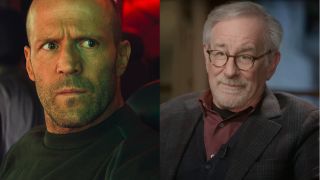Inflamed, impertinent and deeply insightful, D.H. Lawrence’s “Studies in Classic American Literature” remains startlingly relevant 100 years after it was originally published.
 |
Every American is “a torn divided monster,”
D.H. Lawrence wrote, in a book that saw in the nation’s literature a key to its
soul.Credit...Fine Art Images/Heritage
Images, via Getty Images |
It has been a hundred years since D.H. Lawrence published “Studies in Classic American Literature,” and in the annals of literary criticism the book may still claim the widest discrepancy between title and content.
Not with respect to subject matter: As advertised, this compact volume consists of essays on canonical American authors of the 18th and 19th centuries — a familiar gathering of dead white men. Some (Nathaniel Hawthorne, Herman Melville, Walt Whitman) are still household names more than a century later, while others (Hector St. John de Crèvecoeur, Richard Henry Dana Jr.) have faded into relative obscurity. By the 1950s, when American literature was fully established as a respectable field of academic study, Melville’s “Moby-Dick,” Hawthorne’s “The Scarlet Letter,” Whitman’s “Leaves of Grass” and Crèvecoeur’s “Letters From an American Farmer” had become staples of the college and grad school syllabus, which is where I and many others found them in the later decades of the 20th century. Thank goodness Lawrence got there first.
This is not going to be one of those laments about how nobody reads the great old books anymore. Not many people read them when they first appeared, either. My point is that nobody ever read them like Lawrence did — as madly, as wildly or as insightfully.
That’s what I mean about the gap between the book and its title. “Studies in Classic American Literature” is as dull a phrase as any committee of professors could devise. Just try to say those five words without yawning. But look inside and you will be jolted awake.
Lawrence’s deep reading and idiosyncratic learning are abundantly evident — he tosses off snippets of French, German, Italian and Latin, sprinkling his pages with allusions to ancient poetry and modern philosophy — but his tone is the opposite of scholarly. With its one-sentence paragraphs (“Flop goes spiritual love.”), jabbing exclamations (“Freedom!”), semi-rhetorical questions (“But what of Walt Whitman?”) and heavy use of italics and all-caps, the book can read like a scroll of social-media rants. Its manner is neither respectable nor respectful. Lawrence harangues his subjects in the second person (“Nathaniel!”), and subjects them to parodic paraphrase and withering, ad hominem judgment. “I do not like him,” he says of Benjamin Franklin. Benjamin Franklin!
The irreverence is refreshing, but these studies are far from frivolous. Lawrence’s bristling, inflamed, impertinent language provides a reminder that criticism is not just the work of the brain, but of the gut and the spleen as well. The intellectual refinement of his argument — fine-grained evaluations of style and form that still startle with their incisiveness; breathtaking conceptual leaps from history to myth and back again — is unthinkable without the churn of instinct and feeling beneath it. This is the work of a writer whose fiction — including his briefly banned masterpiece “The Rainbow” and his long-suppressed “Lady Chatterley’s Lover” — makes much of the conflict between decorum and desire.

In that respect, the book is the mirror of its subject. Each of the writers under scrutiny, like the culture that spawned them, is a divided soul, pulled between contrary impulses. On one side, there is a moralizing, do-gooding, civilizing imperative, a force that Lawrence variously identifies with idealism, “saviorism” and democracy, none of which he much cares for. Franklin is one avatar of this tendency — “the pattern American, this dry, moral, utilitarian little democrat” — which explains Lawrence’s dislike:
Here am I now in tatters and scratched to ribbons, sitting in the middle of Benjamin’s America looking at the barbed wire, and the fat sheep crawling under the fence to get fat outside, and the watchdogs yelling at the gate lest by chance anyone should get out by the proper exit. Oh America! Oh Benjamin! And I utter a long loud curse against Benjamin and the American corral.
But Franklin is not the only American writer bound by the constraints of careful morality. Even the wildest of Lawrence’s specimens — the feverish Edgar Allan Poe, the restless Melville, the ecstatic Whitman — are corralled by various forms of propriety and high-minded sentiment.
The thorniest part of Lawrence’s argument — the strain in the book that feels scandalous, even dangerous, at present — is that he identifies those sentiments with what many Americans would consider the positive substance of our national identity. His hostility to the idea of democracy and the ideal of equality partly reflects a general philosophical bias. “Damn all ideas and all ideals,” he rails, seeing such abstraction as an impediment to authentic human connection: “If only people would meet in their very selves.” But this idea of authenticity is bound up with a mystical ideology of race, sex, blood and destiny that is apt to trouble 21st-century sensibilities.
Or maybe not. Like some other modernist writers — W.B. Yeats, Ezra Pound, Wyndham Lewis — Lawrence, who died in 1930, dabbled in a mode of aesthetic anti-liberalism that may be making a comeback. His critique of America, where he had traveled in the early 1920s, living for a time in Taos, N.M., was a broadside against the nation’s progressive traditions. Its writers were both his antagonists and his allies. Or rather, their expressed beliefs were anathema, while their work revealed what to him was a more congenial truth.
“The artist,” he writes in one of the most frequently quoted passages, “usually sets out — or used to — to point a moral and adorn a tale. The tale, however, points the other way, as a rule. Two blankly opposing morals, the artist’s and the tale’s. Never trust the artist. Trust the tale.”
The tale that classic American literature tells, in the aggregate, is largely one of violence, conflict and cruelty, whether it unfolds on Cooper’s frontier, in Hawthorne’s Salem, in Poe’s fantastical mansions or on Melville’s South Seas. There is a remorseless clarity to Lawrence’s perception of this bloody tapestry, summed up in his description of Cooper’s Natty Bumppo:
But you have there the myth of the essential white America. All the other stuff, the love, the democracy, the floundering into lust, is a sort of by-play. The essential American soul is hard, isolate, stoic and a killer. It has never yet melted.
This is a hard formulation to accept, but it is also not an easy one to dismiss. Much as we may wish to deny it, racial violence is a central fact of our history. And as distasteful as it may be to imagine this country defined by Cooper’s “essential American” on one hand and Franklin’s industrious, positive-thinking “pattern American” on the other, the tension between them might be more than just a literary conceit. Without it, American literature might not exist at all.
What Lawrence saw in his eccentric, passionate reading of that literature was division, polarization and contradiction. Not so much among factions, parties, regions or races — ordinary politics doesn’t really enter his field of vision — as within individual hearts and the collective soul. Every American is “a torn divided monster,” he writes at one point.
And elsewhere, a century ago that might as well have been last week: “America has never been easy, and is not easy today.”
via A.O. Scott
Critic at large for the Book Review. He joined The Times in 2000 and was a film critic until early 2023. He is also the author of “Better Living Through Criticism."More about A.O. Scott"









.png)




